Abstract
Behavioral researchers play critical, but often unanalyzed, roles in the programs they develop. Unless they replace their key activities with standardized procedures, their continued participation may be essential to program success--a situation that is often not only impractical but may be prohibitively expensive and disliked by local staff. This study was conducted in a student housing cooperative that is dependent on close researcher supervision for its continued health and survival. A key activity of the co-op researchers was to provide public recognition for good job performance by co-op members. The purposes of this study were (a) to replace that idiosyncratic recognition with systematic procedures so members, instead of the researchers, would provide public recognition to each other for good job performance; and (b) to evaluate those procedures by comparing job performance when member-delivered recognition was provided and when it was not. When the procedures were in place, job performance increased and fines for poor job performance and complaining at meetings decreased. This study suggests that procedures can be developed to reduce program reliance on the researcher that are effective, inexpensive, sustainable, and acceptable to the participants--a first step toward developing a technology of program maintenance.
Full text
PDF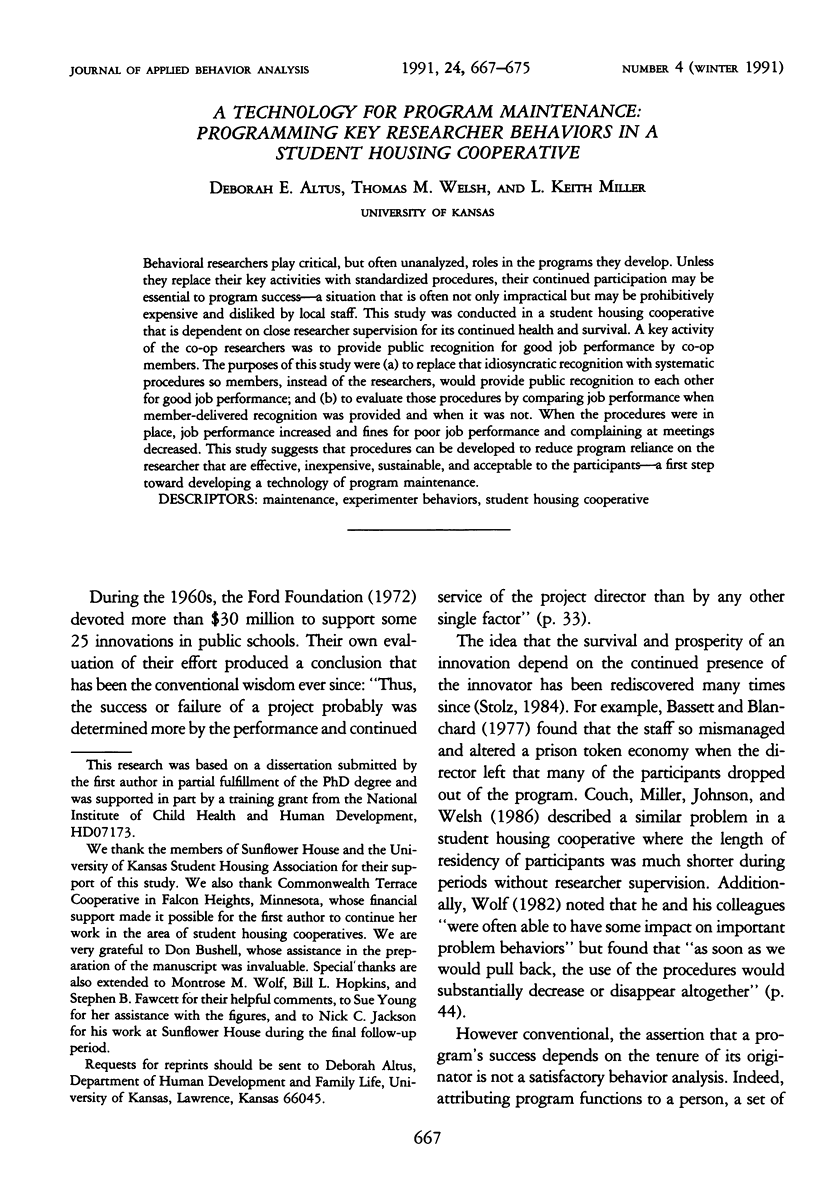
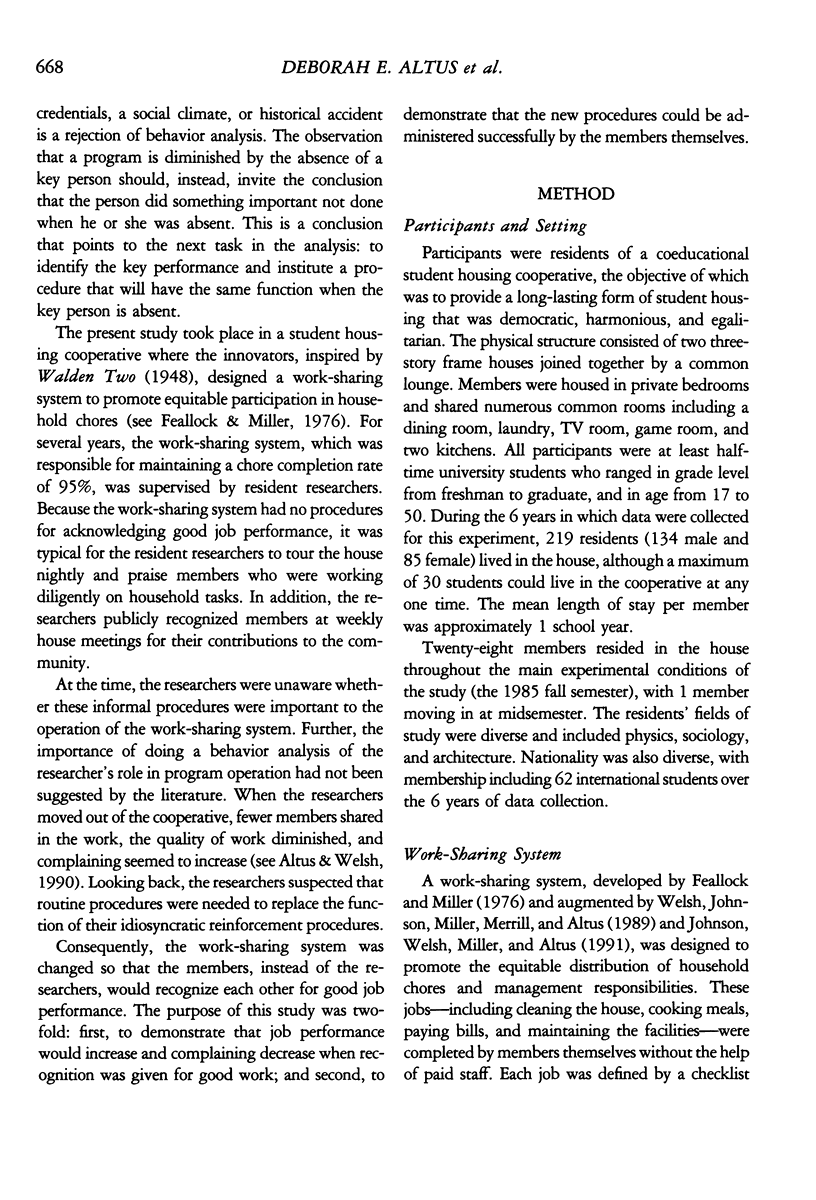
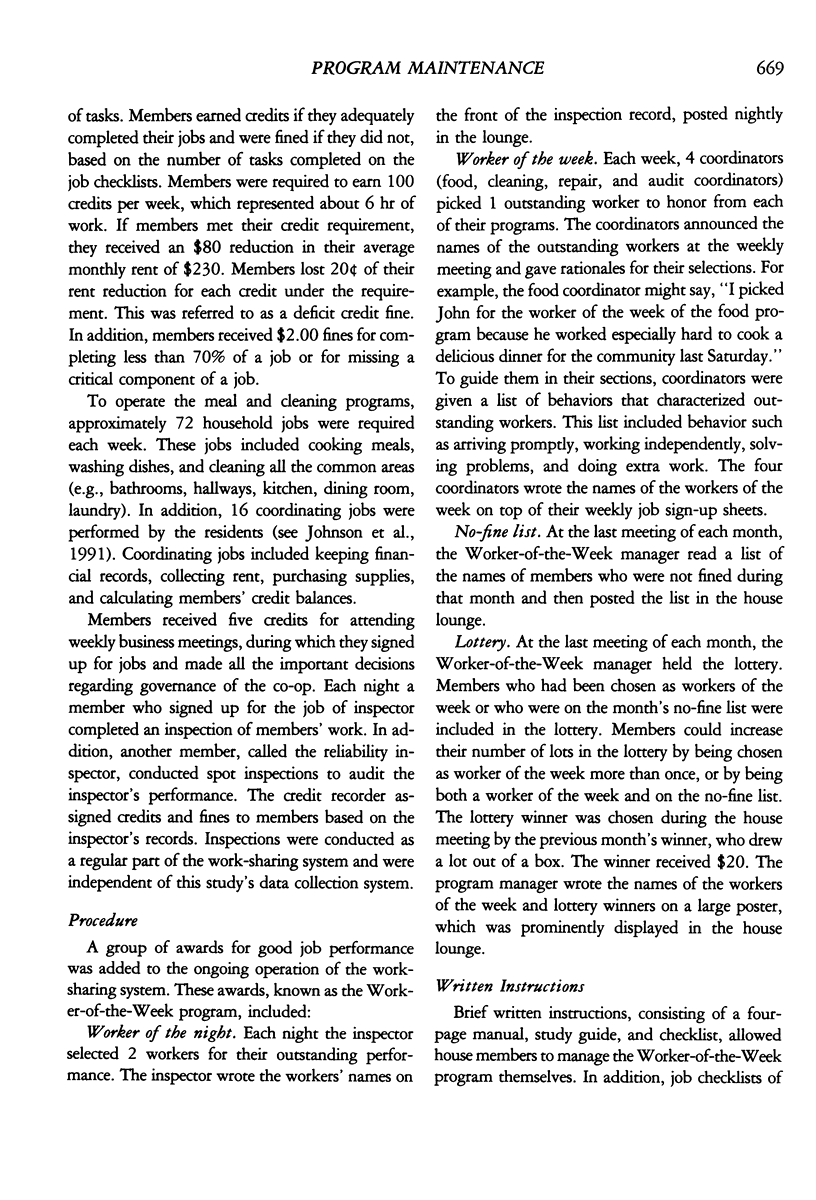
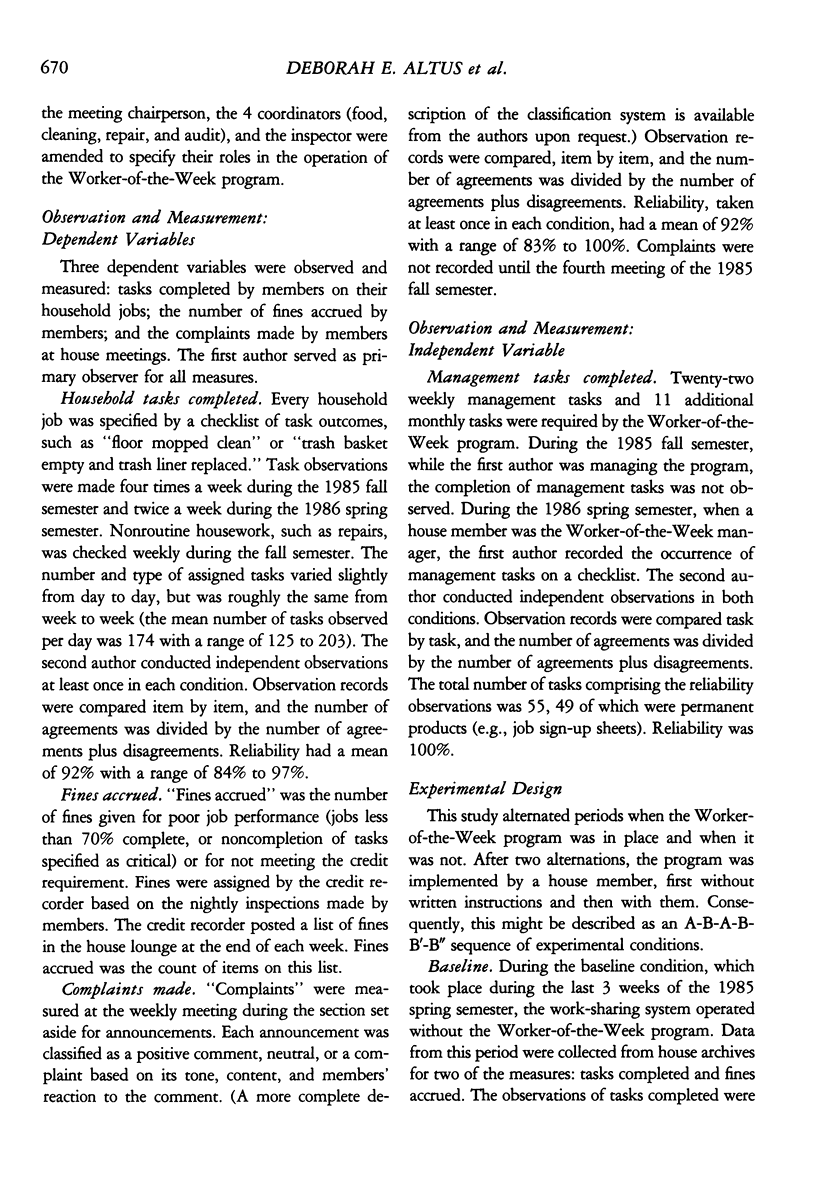
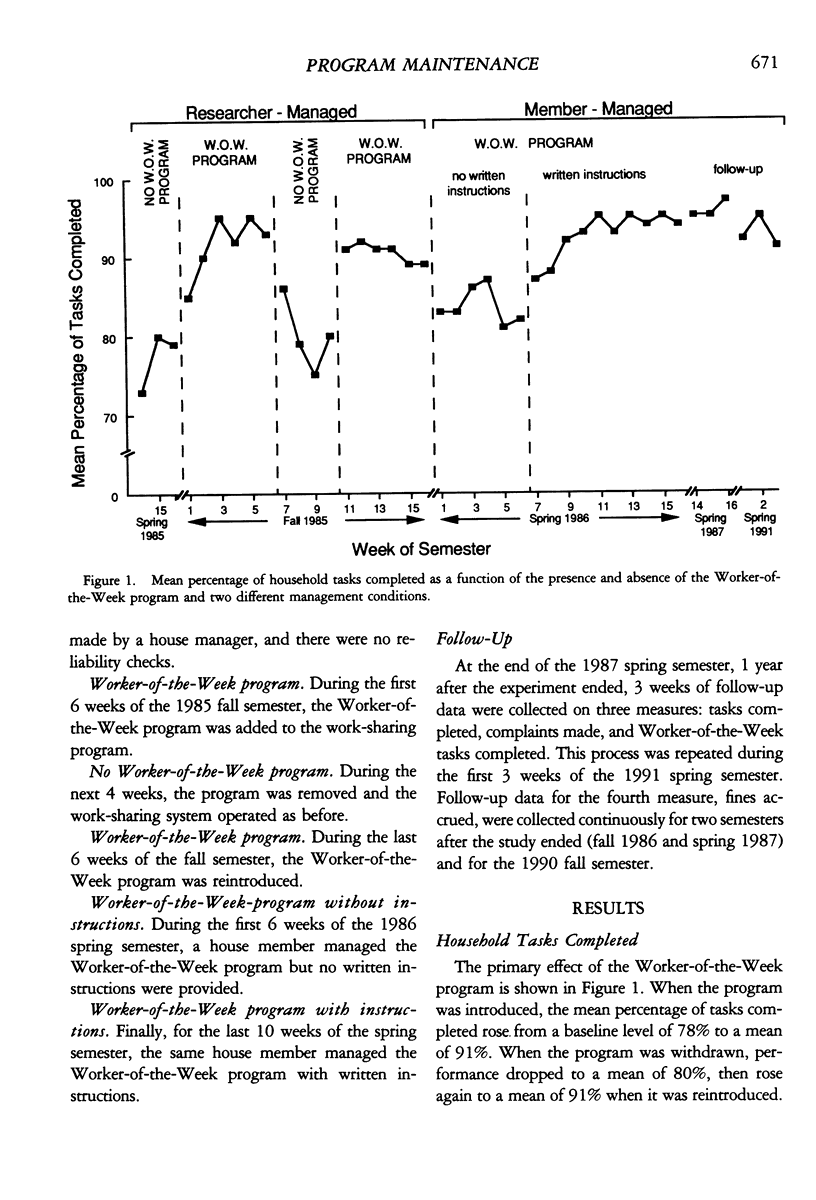
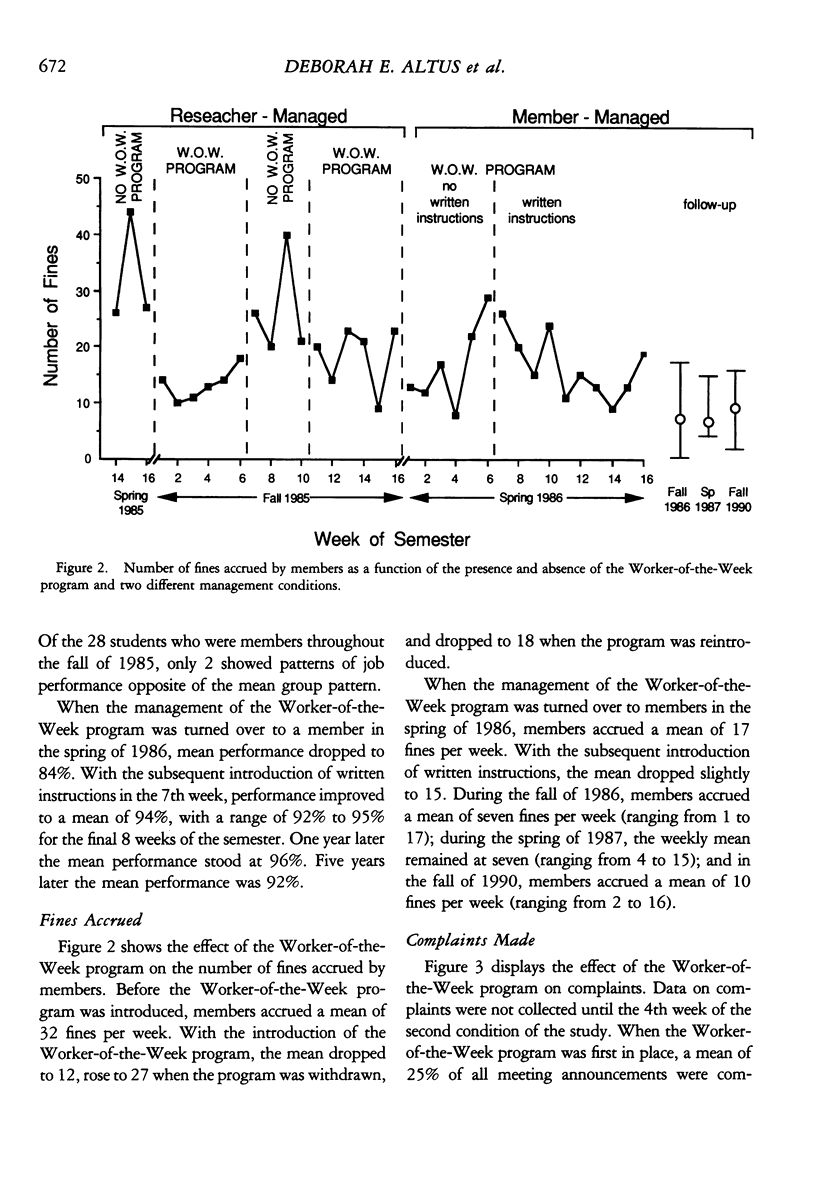
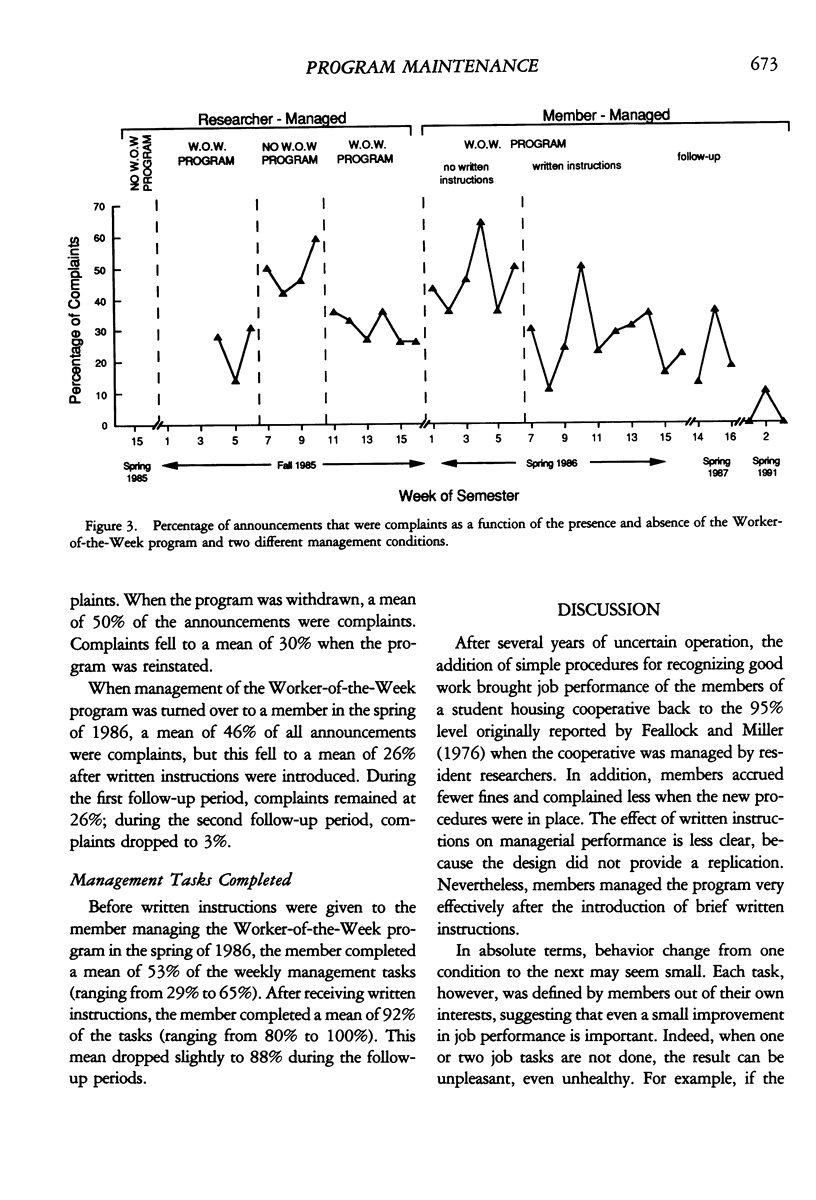
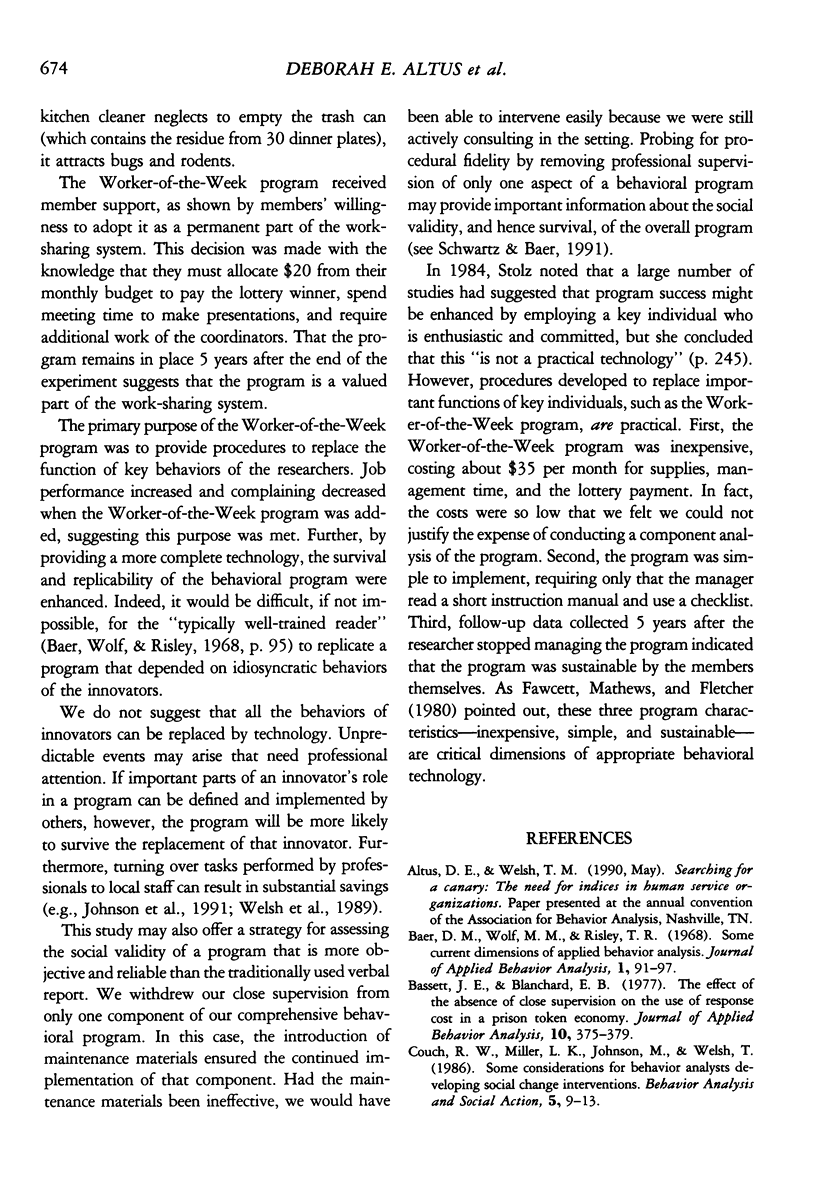
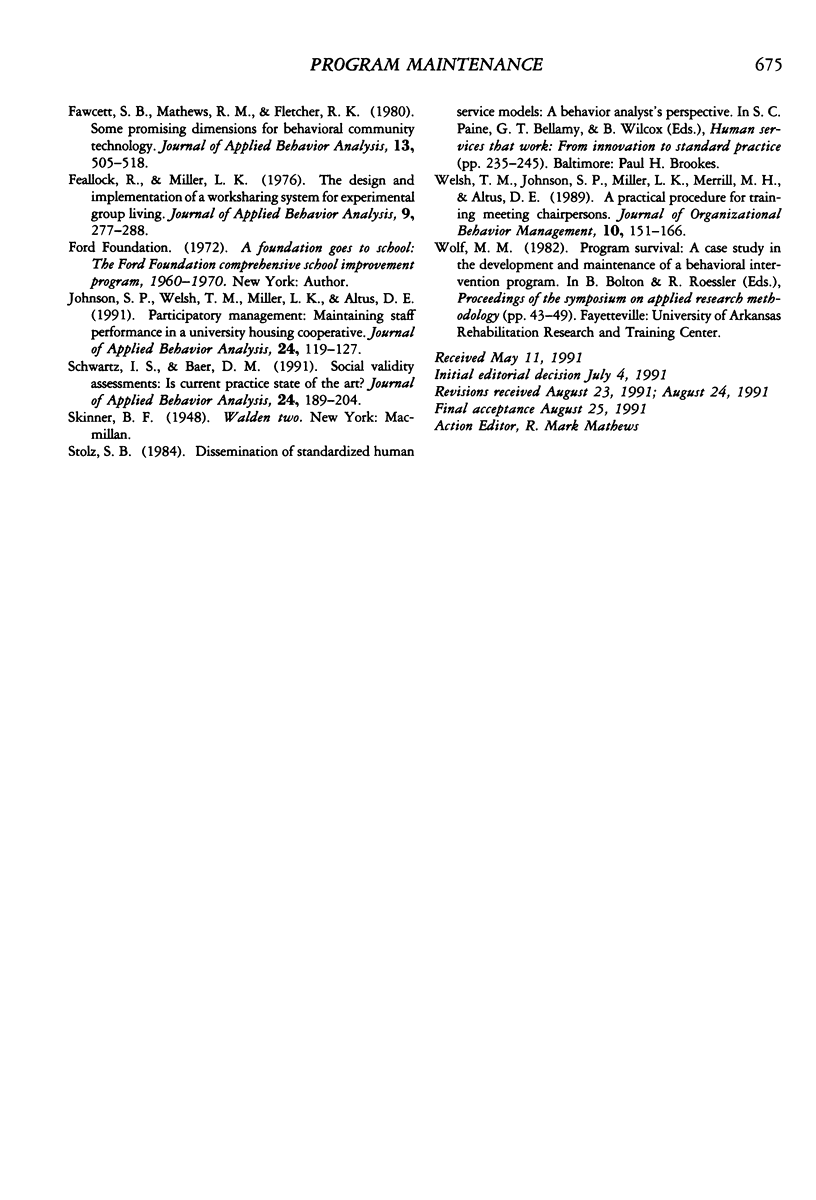
Selected References
These references are in PubMed. This may not be the complete list of references from this article.
- Baer D. M., Wolf M. M., Risley T. R. Some current dimensions of applied behavior analysis. J Appl Behav Anal. 1968 Spring;1(1):91–97. doi: 10.1901/jaba.1968.1-91. [DOI] [PMC free article] [PubMed] [Google Scholar]
- Bassett J. E., Blanchard E. B. The effect of the absence of close supervision on the use of response cost in a prison token economy. J Appl Behav Anal. 1977 Fall;10(3):375–379. doi: 10.1901/jaba.1977.10-375. [DOI] [PMC free article] [PubMed] [Google Scholar]
- Fawcett S. B., Mathews R. M., Fletcher R. K. Some promising dimensions for behavioral community technology. J Appl Behav Anal. 1980 Fall;13(3):505–518. doi: 10.1901/jaba.1980.13-505. [DOI] [PMC free article] [PubMed] [Google Scholar]
- Feallock R., Miller L. K. The design and evaluation of a worksharing system for experimental group living. J Appl Behav Anal. 1976 Fall;9(3):277–288. doi: 10.1901/jaba.1976.9-277. [DOI] [PMC free article] [PubMed] [Google Scholar]
- Johnson S. P., Welsh T. M., Miller L. K., Altus D. E. Participatory management: Maintaining staff performance in a university housing cooperative. J Appl Behav Anal. 1991 Spring;24(1):119–127. doi: 10.1901/jaba.1991.24-119. [DOI] [PMC free article] [PubMed] [Google Scholar]
- Schwartz I. S., Baer D. M. Social validity assessments: is current practice state of the art? J Appl Behav Anal. 1991 Summer;24(2):189–204. doi: 10.1901/jaba.1991.24-189. [DOI] [PMC free article] [PubMed] [Google Scholar]


